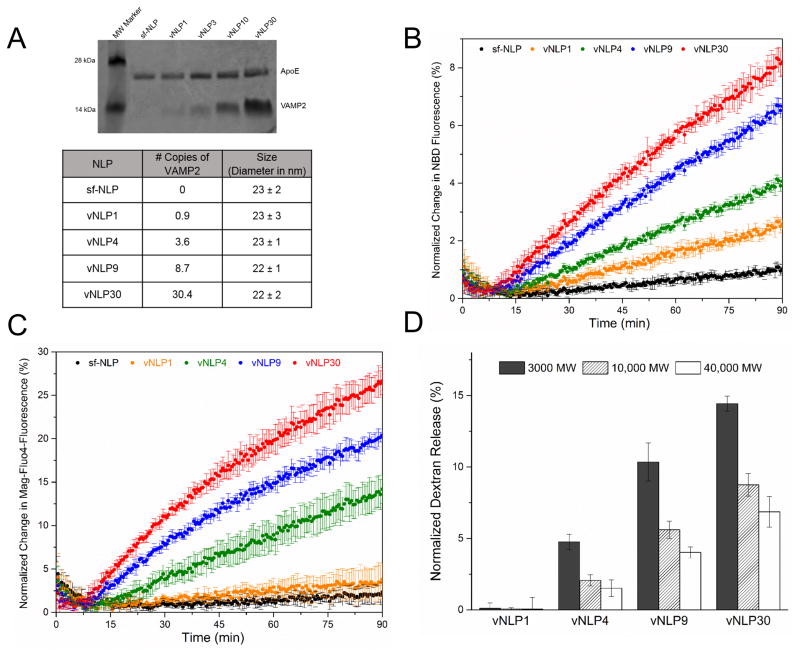Figure 4.
Effect of VAMP2 copy number on fusion pore dynamics. (A) NLPs with desired number of VAMP2 copy was generated by adjusting the ApoE/VAMP2 input ratio. Based on the coomassie stained SDS-PAGE analysis, the number of copies of VAMP2 per NLP was estimated by densitometry assuming each NLP is formed by 6 copies of ApoE protein. The size and particle distribution of vNLPs was determined by negative stain EM analysis. (B) All vNLPs tested drove lipid mixing as monitored by NBD dequenching assay, with rate and extent of fusion correlated to the copy number. (C) Calcium release assays of vNLP with different VAMP2 copies shows efficient efflux starting with NLP containing at least 3–4 copies of VAMP2 (vNLP4), with little or no calcium efflux was detectable with lower copy number (vNLP1, orange curve). (D) Dextran release assay shows that increasing the number of copies of VAMP2 per NLP enhances the efflux of dextran, including the larger (10,000 MW and 40,000 MW) dextrans indicating a cooperative role for SNAREs in dilating the fusion pore.

